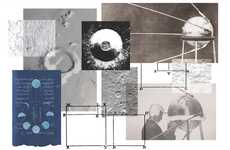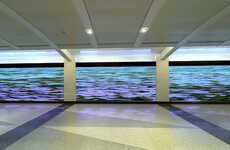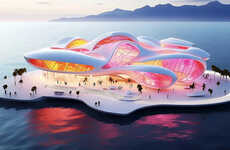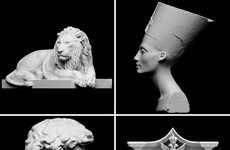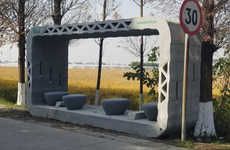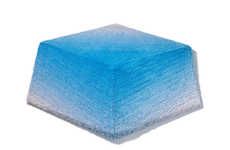'Digital Grotesque II' is History's Most Complex Structure
Joey Haar — April 11, 2017 — Art & Design
References: digital-grotesque & fastcodesign
In terms of processing power, computers are more adept than even thousands of human minds working in conjunction, and 'Digital Grotesque II' shows that, coupled with a physical outlet, computers can be more adept than thousands of human hands as well. The artistic piece, more sculpture than structure, is certifiably the most complex three-dimensional work ever created thanks to the use of a processing algorithm, a tremendously powerful computer, and a massive 3D printer.
Standing at 3.5 meters tall, Digital Grotesque II has 1.3 billion individual surfaces that create hundreds of square meters of surface area. To put that number into perspective, the seven-ton block of sandstone has a surface area comparable to that of Grand Central Station's Main Concourse. The designers were able to achieve such mind-boggling complexity thanks to customized algorithms: in fact, no aspect was created with manual human intervention (and indeed the complexity of the project would render such intervention futile.)
Digital Grotesque II was commissioned by and is currently on display at the Centre Pompidou in Paris.
Standing at 3.5 meters tall, Digital Grotesque II has 1.3 billion individual surfaces that create hundreds of square meters of surface area. To put that number into perspective, the seven-ton block of sandstone has a surface area comparable to that of Grand Central Station's Main Concourse. The designers were able to achieve such mind-boggling complexity thanks to customized algorithms: in fact, no aspect was created with manual human intervention (and indeed the complexity of the project would render such intervention futile.)
Digital Grotesque II was commissioned by and is currently on display at the Centre Pompidou in Paris.
Trend Themes
1. Algorithmic Sculptures - The use of algorithms and processing power allows for the creation of intricate and complex sculptures that surpass human capabilities.
2. 3D Printing - Massive 3D printers enable the production of large-scale, highly detailed structures like Digital Grotesque II.
3. Automated Design - Customized algorithms can generate designs without the need for manual human intervention, opening up new possibilities in artistic expression.
Industry Implications
1. Art and Sculpture - The use of algorithmic design and 3D printing techniques creates disruptive innovation opportunities in the art and sculpture industry.
2. Architecture - Automated design algorithms and large-scale 3D printing present potential disruptive innovations in architectural construction and design.
3. Manufacturing - The integration of algorithms and 3D printing technologies offers disruptive innovation opportunities in the manufacturing industry, enabling the creation of complex and customizable products.
5.9
Score
Popularity
Activity
Freshness
